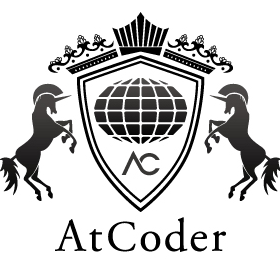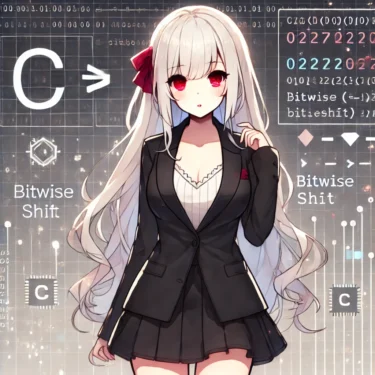- 1 1. Introduction: Why Work with Binary Numbers in C
- 2 2. What Is a Binary Number? Understanding the Basics
- 3 3. How to Represent Binary Numbers in C
- 4 4. How to Convert Decimal to Binary in C
- 5 5. How to Convert Binary to Decimal in C
- 6 6. How to Display Binary Numbers in C
- 7 7. Learning Bitwise Operations from Basics to Applications
- 8 8. Practical Use Cases of Binary in C
- 9 9. FAQ: Frequently Asked Questions About Binary in C
- 9.1 Q1: Is there a way to directly write binary literals in C?
- 9.2 Q2: What should I watch out for when working with binary?
- 9.3 Q3: How can I change only a specific bit?
- 9.4 Q4: Why do results change when operating on negative numbers?
- 9.5 Q5: Can I make simple functions for converting between decimal and binary?
- 9.6 Q6: What are the benefits of using bitfields?
- 9.7 Q7: What are useful debugging tips for bitwise operations?
- 10 10. Summary and Next Steps
1. Introduction: Why Work with Binary Numbers in C
The C programming language is widely used for system-level development, enabling low-level operations such as memory management and device control. For these operations, knowledge of binary numbers is essential. This article explains everything from the basics to advanced techniques for working with binary numbers in C.
Why Binary Numbers Are Needed in C
How Computers Work and Binary Numbers
When processing data internally, computers use binary numbers composed of 0s and 1s. This corresponds to the “on (1)” and “off (0)” states of electrical signals, making it the most fundamental form of data representation. C is well-suited for such low-level operations, so understanding how to work with binary numbers is crucial.
Memory Management and Efficient Program Design
When a program stores data in memory, binary numbers are used with data size and efficiency in mind. For example, manipulating data at the bit level allows for efficient memory management. The ability to work with binary numbers directly in C is necessary to save resources and speed up programs.
Using Flags and Bitwise Operations
In C, bitwise operations can be used to manage flags or manipulate specific parts of data efficiently. This makes it possible to implement complex algorithms and system designs.
What You Will Learn in This Article
This article covers the following topics:
- Basic knowledge of binary numbers
- How to represent binary numbers in C
- Converting between binary and decimal
- Basics and applications of bitwise operations
- Practical code examples and usage scenarios
From beginners to intermediate programmers, readers will be able to deepen their understanding of binary manipulation in C.
2. What Is a Binary Number? Understanding the Basics
Binary numbers are used by computers to process data. Understanding their basic mechanism and concept will help you build a solid foundation for programming in C. In this section, we will explain what binary numbers are, why they are used in computers, and how they differ from decimal numbers, including conversion methods.
Binary Basics
Binary (base-2) is a numerical representation that uses only the digits 0 and 1. It corresponds to the “on” and “off” states of electrical signals in a computer, forming the foundation of digital technology.
Examples:
- Decimal “1” in binary: “1”
- Decimal “2” in binary: “10”
- Decimal “3” in binary: “11”
Bits and Bytes
The basic unit of binary is the bit, which holds a value of either 0 or 1, making it the smallest unit of data.
Eight bits make up one byte, and data is typically handled in bytes.
Example:
- 8 bits (1 byte): 00000000 to 11111111 (representing values 0–255)
Difference from Decimal
In everyday life, we use decimal numbers (base-10), which are based on digits 0–9. Binary numbers use only 0 and 1. Understanding this difference makes number conversion and algorithm design smoother.
Example:
| Decimal | Binary |
|---|---|
| 0 | 0 |
| 1 | 1 |
| 2 | 10 |
| 3 | 11 |
| 4 | 100 |
How to Convert Decimal to Binary
To convert decimal to binary, use the modulus division method:
- Divide the decimal value by 2.
- Divide the quotient by 2 again, recording the remainders.
- Repeat until the quotient is 0, then reverse the order of the remainders.
Example: Convert Decimal 13 to Binary
- 13 ÷ 2 = 6 remainder 1
- 6 ÷ 2 = 3 remainder 0
- 3 ÷ 2 = 1 remainder 1
- 1 ÷ 2 = 0 remainder 1
Result: 1101
How to Convert Binary to Decimal
To convert binary to decimal, calculate the value of each bit and sum them.
The value of each position is the bit value multiplied by the corresponding power of 2.
Example: Convert Binary 1101 to Decimal
- Rightmost bit: 1 × 2^0 = 1
- Second bit: 0 × 2^1 = 0
- Third bit: 1 × 2^2 = 4
- Leftmost bit: 1 × 2^3 = 8
Result: 1 + 0 + 4 + 8 = 13
Why Binary Is Used
- Simplicity: Since computers operate on electrical signals, binary’s two states (on/off) are highly efficient.
- Stability: Binary is resistant to small signal variations, enabling reliable data processing.
3. How to Represent Binary Numbers in C
C does not provide direct support for binary literals, so certain techniques and workarounds are needed. In this section, we’ll cover basic representation methods for binary in C, precautions when working with them, and useful practical techniques.
Writing Binary Literals
In standard C, there is no direct syntax for binary literals. Instead, you can use other number systems (decimal, hexadecimal, or octal) to represent binary values.
Using Hexadecimal or Decimal Instead of Binary
- Hexadecimal: One hexadecimal digit corresponds exactly to 4 bits (4 binary digits), making it very compatible with binary representation.
- Example:
0b1010(binary) can be written as0xAin hexadecimal.
Using Bit Shift Operations
Although direct binary literals are not available, you can use bit shift operations to construct binary-like values.
#include <stdio.h>
int main() {
int value = (1 << 3) | (1 << 1); // Represents binary 1010
printf("Value: %d\n", value); // Outputs 10 (decimal)
return 0;
}In this example, the bit shift operator (<<) is used to create a binary-style representation.
Creating a Function to Handle Binary
A common practice is to create your own function to display or handle binary values. This improves code readability and makes binary handling more flexible.
Example: Custom Binary Print Function
The following function prints a given integer in binary format:
#include <stdio.h>
void printBinary(int num) {
for (int i = 31; i >= 0; i--) { // Assuming a 32-bit integer
printf("%d", (num >> i) & 1);
}
printf("\n");
}
int main() {
int value = 10; // Decimal 10
printf("Decimal: %d\n", value);
printf("Binary: ");
printBinary(value); // Display in binary
return 0;
}This code defines a function that prints each bit by shifting and masking (>> and &).
Precautions and Tips
1. Beware of Overflow
When performing bit operations in C, going beyond the bit width of the data type (e.g., 32-bit or 64-bit) can cause undefined behavior. Always be aware of the bit width of your variables (int, unsigned int, etc.).
2. Handling Negative Numbers
Negative numbers are stored using two’s complement representation, which affects how they behave in bitwise operations. Be careful when working with signed integers.
3. Maintaining Readability
Since bit manipulation is not always intuitive, use comments and helper functions to clarify your intent.
4. How to Convert Decimal to Binary in C
Converting decimal numbers to binary in C is one of the fundamental skills in programming. This is particularly useful when performing bit-level operations or data analysis. In this section, we’ll explain both manual conversion methods and automated conversion using programs.
Manual Conversion from Decimal to Binary
To manually convert a decimal number to binary, follow these steps:
- Divide by 2: Divide the decimal number by 2 and record the remainder.
- Repeat: Divide the quotient by 2 until the quotient becomes 0, recording each remainder.
- Reverse the remainders: The binary representation is obtained by reading the remainders from bottom to top.
Example: Converting Decimal 13 to Binary
- 13 ÷ 2 = 6 remainder 1
- 6 ÷ 2 = 3 remainder 0
- 3 ÷ 2 = 1 remainder 1
- 1 ÷ 2 = 0 remainder 1
Result: 1101 (binary)
C Program for Decimal to Binary Conversion
Here’s an example C program that converts a decimal number to binary and prints it:
#include <stdio.h>
void decimalToBinary(int num) {
int binary[32]; // Buffer for up to 32 bits
int index = 0;
// Convert to binary
while (num > 0) {
binary[index] = num % 2; // Store remainder
num = num / 2; // Update quotient
index++;
}
// Print in reverse order
printf("Binary: ");
for (int i = index - 1; i >= 0; i--) {
printf("%d", binary[i]);
}
printf("\n");
}
int main() {
int value;
printf("Enter a decimal number: ");
scanf("%d", &value);
decimalToBinary(value); // Convert and display
return 0;
}Example Output:
Input: 13
Output: Binary: 1101
Efficient Conversion Using Bitwise Operations
Bitwise operations can be used to efficiently display binary values. The example below uses right shift (>>) operations:
#include <stdio.h>
void printBinaryUsingBitwise(int num) {
printf("Binary: ");
for (int i = 31; i >= 0; i--) {
printf("%d", (num >> i) & 1); // Shift and mask each bit
}
printf("\n");
}
int main() {
int value;
printf("Enter a decimal number: ");
scanf("%d", &value);
printBinaryUsingBitwise(value); // Display using bitwise operations
return 0;
}Example Output:
Input: 13
Output: Binary: 00000000000000000000000000001101
Practical Use Cases for Binary Conversion
Flag Management
Converting decimal to binary makes it easier to manage flags, with each bit representing a specific on/off state.
Network Programming
Binary conversion is frequently used in IP address and subnet mask calculations.
Notes
- Data Type Limits:
intusually handles 32-bit values. For larger numbers, consider usinglongor other types. - Handling Negative Numbers: Be aware of two’s complement representation when working with signed integers.
5. How to Convert Binary to Decimal in C
Converting binary numbers to decimal in C is an important skill when designing programs or algorithms. In this section, we’ll cover how to convert binary to decimal manually and how to implement it in C.
Manual Conversion from Binary to Decimal
The basic method for converting binary to decimal is to multiply each bit by its corresponding power of two and sum the results.
Conversion Steps:
- Start with the rightmost bit (least significant bit).
- Multiply each bit by 2 raised to the power of its position.
- Add up all the values.
Example: Convert Binary 1101 to Decimal
- Rightmost bit (1): (1 × 2^0 = 1)
- Second bit (0): (0 × 2^1 = 0)
- Third bit (1): (1 × 2^2 = 4)
- Leftmost bit (1): (1 × 2^3 = 8)
Result: (8 + 4 + 0 + 1 = 13)
C Program to Convert Binary to Decimal (String Input)
The following program converts a binary number (entered as a string) into a decimal number:
#include <stdio.h>
#include <string.h>
#include <math.h>
int binaryToDecimal(const char *binary) {
int decimal = 0;
int length = strlen(binary);
// Convert binary to decimal
for (int i = 0; i < length; i++) {
if (binary[i] == '1') {
decimal += pow(2, length - 1 - i);
}
}
return decimal;
}
int main() {
char binary[33]; // Up to 32-bit binary numbers
printf("Enter a binary number: ");
scanf("%s", binary);
int decimal = binaryToDecimal(binary);
printf("Decimal: %d\n", decimal);
return 0;
}Example Output:
Input: 1101
Output: Decimal: 13
Efficient Conversion Using Bitwise Operations
If the binary value is stored as an integer, you can use bitwise operations for conversion:
#include <stdio.h>
int binaryToDecimalUsingBitwise(int binary) {
int decimal = 0;
int base = 1; // Starts at 2^0
while (binary > 0) {
int lastBit = binary % 10; // Get the rightmost bit
decimal += lastBit * base;
base *= 2; // Multiply base by 2
binary /= 10; // Move to the next bit
}
return decimal;
}
int main() {
int binary;
printf("Enter a binary number (integer format): ");
scanf("%d", &binary);
int decimal = binaryToDecimalUsingBitwise(binary);
printf("Decimal: %d\n", decimal);
return 0;
}Example Output:
Input: 1101
Output: Decimal: 13
Important Notes
- Input Format
- If the binary input is in string format, process each character individually.
- If it’s in integer format, use the modulus operator (
%) to get each bit.
- Overflow
- For long binary numbers, results may exceed the range of
int. Uselongorlong longif needed.
- Negative Numbers
- When working with signed binary numbers (two’s complement), special handling is required.
6. How to Display Binary Numbers in C
Displaying binary numbers in C is useful for debugging and data visualization. However, the C standard library does not provide a direct way to output binary, so you need to implement your own approach. In this section, we’ll cover basic methods using printf as well as more flexible custom functions.
Displaying Binary with printf
Method 1: Using Bit Shifts to Output One Bit at a Time
By applying bit shift operations, you can display binary values directly. The following example prints each bit from the most significant to the least significant:
#include <stdio.h>
void printBinary(int num) {
for (int i = 31; i >= 0; i--) { // Assuming 32-bit integer
printf("%d", (num >> i) & 1); // Output each bit
}
printf("\n");
}
int main() {
int value;
printf("Enter an integer: ");
scanf("%d", &value);
printf("Binary: ");
printBinary(value);
return 0;
}Example Output:
Input: 13
Output: Binary: 00000000000000000000000000001101
This method always prints the full bit width (e.g., 32 bits), regardless of the actual value.
Flexible Binary Display with Custom Functions
Method 2: Display Only Necessary Bits
Instead of printing all bits, you can skip leading zeros to show only the meaningful portion of the binary value:
#include <stdio.h>
void printBinaryCompact(int num) {
int leading = 1; // Skip leading zeros
for (int i = 31; i >= 0; i--) {
int bit = (num >> i) & 1;
if (bit == 1) leading = 0; // First '1' found
if (!leading || i == 0) printf("%d", bit); // Always print last bit
}
printf("\n");
}
int main() {
int value;
printf("Enter an integer: ");
scanf("%d", &value);
printf("Binary: ");
printBinaryCompact(value);
return 0;
}Example Output:
Input: 13
Output: Binary: 1101
Outputting Binary as a String
Method 3: Store as a String for Reuse
You can generate the binary representation as a string for use in other functions, comparisons, or further processing:
#include <stdio.h>
#include <string.h>
void getBinaryString(int num, char *binary) {
int index = 0;
for (int i = 31; i >= 0; i--) {
binary[index++] = ((num >> i) & 1) + '0'; // Convert bit to char
}
binary[index] = '\0'; // Null terminator
}
int main() {
int value;
char binary[33]; // 32 bits + terminator
printf("Enter an integer: ");
scanf("%d", &value);
getBinaryString(value, binary);
printf("Binary: %s\n", binary);
return 0;
}Example Output:
Input: 13
Output: Binary: 00000000000000000000000000001101
Advanced: Grouping Binary Output for Readability
Sometimes it’s helpful to group binary output into sections for easier reading. The following example separates bits into 4-bit groups:
#include <stdio.h>
void printBinaryWithGroups(int num) {
for (int i = 31; i >= 0; i--) {
printf("%d", (num >> i) & 1);
if (i % 4 == 0 && i != 0) printf(" "); // Space every 4 bits
}
printf("\n");
}
int main() {
int value;
printf("Enter an integer: ");
scanf("%d", &value);
printf("Binary: ");
printBinaryWithGroups(value);
return 0;
}Example Output:
Input: 13
Output: Binary: 0000 0000 0000 0000 0000 0000 0000 1101
Notes
- Handling Negative Numbers
- Signed integers are displayed in two’s complement form. If you need to show the sign separately, handle the sign bit explicitly.
- Bit Width Awareness
- Know the bit width of your data types (
int,long,unsigned int, etc.) to ensure correct output.
- Readability
- Use spacing or grouping to make binary output more understandable.
7. Learning Bitwise Operations from Basics to Applications
In C, bitwise operations allow you to manipulate data efficiently at the bit level. They are especially useful in low-level programming and situations where performance is critical. This section explains the basics of bitwise operations and provides practical examples of their application.
Basics of Bitwise Operations
Bitwise operations work directly on the individual bits of integers. Below are the primary bitwise operators used in C and their roles.
Main Bitwise Operators and Their Behavior
| Operator | Name | Example (A = 5, B = 3) | Result |
|---|---|---|---|
& | AND | A & B (0101 & 0011) | 0001 |
| | OR | A | B (0101 | 0011) | 0111 |
^ | XOR | A ^ B (0101 ^ 0011) | 0110 |
~ | NOT (Complement) | ~A (~0101) | 1010 |
<< | Left Shift | A << 1 (0101 << 1) | 1010 |
>> | Right Shift | A >> 1 (0101 >> 1) | 0010 |
Examples of Each Operation
AND (&): Checks for matching bits
Returns 1 if both bits are 1.
#include <stdio.h>
int main() {
int a = 5; // 0101
int b = 3; // 0011
printf("A & B = %d\n", a & b); // Result: 1 (0001)
return 0;
}OR (|): Returns 1 if either bit is 1
printf("A | B = %d\n", a | b); // Result: 7 (0111)XOR (^): Returns 1 if bits are different
printf("A ^ B = %d\n", a ^ b); // Result: 6 (0110)NOT (~): Inverts all bits
printf("~A = %d\n", ~a); // Result: -6 (two's complement)Left Shift (<<): Moves bits to the left
printf("A << 1 = %d\n", a << 1); // Result: 10 (1010)Right Shift (>>): Moves bits to the right
printf("A >> 1 = %d\n", a >> 1); // Result: 2 (0010)Applications of Bitwise Operations
Bitwise operations are widely used for efficient data management and flag control. Below are some common use cases.
1. Managing Flags with Bitmasks
Bitmasks allow multiple on/off states to be stored in a single variable.
Example: Managing 4 flags in one int variable.
#include <stdio.h>
#define FLAG_A 0x01 // 0001
#define FLAG_B 0x02 // 0010
#define FLAG_C 0x04 // 0100
#define FLAG_D 0x08 // 1000
int main() {
int flags = 0;
// Set flags
flags |= FLAG_A; // Enable FLAG_A
flags |= FLAG_C; // Enable FLAG_C
printf("Flags: %d\n", flags); // Result: 5 (0101)
// Check flags
if (flags & FLAG_A) printf("FLAG_A is ON\n");
if (flags & FLAG_B) printf("FLAG_B is ON\n");
// Clear a flag
flags &= ~FLAG_A; // Disable FLAG_A
printf("Flags: %d\n", flags); // Result: 4 (0100)
return 0;
}2. Toggling Specific Bits
Use XOR to flip a specific bit (toggle ON/OFF):
#include <stdio.h>
int main() {
int value = 5; // 0101
int toggleBit = 1; // 0001
value ^= toggleBit; // Result: 0100
printf("Value after toggle: %d\n", value);
return 0;
}3. Data Compression and Retrieval
Bit shifts can pack multiple values into a single variable and retrieve them later:
#include <stdio.h>
int main() {
int compressed = 0;
// Store values
compressed |= (3 << 4); // Upper 4 bits = 3
compressed |= 5; // Lower 4 bits = 5
printf("Compressed: %d\n", compressed);
// Retrieve values
int upper = (compressed >> 4) & 0xF; // Get upper 4 bits
int lower = compressed & 0xF; // Get lower 4 bits
printf("Upper: %d, Lower: %d\n", upper, lower);
return 0;
}Notes
- Signed Integers
- Signed values use two’s complement, so be cautious with operations involving negative numbers.
- Readability
- Bitwise operations can reduce code readability. Use comments and named constants to make the intent clear.
- Overflow
- Shifting beyond the bit width of the type leads to undefined behavior.
8. Practical Use Cases of Binary in C
In this section, we’ll explore how binary numbers and bitwise operations can be applied in real-world C programming scenarios. These techniques are valuable for efficient data management and low-level programming tasks. Each example is based on common situations you may encounter in practice.
1. Implementing a Binary Counter
A binary counter represents numbers in binary form and uses bit operations to increment values. This approach is useful for efficient looping and state management.
#include <stdio.h>
void binaryCounter(int limit) {
for (int i = 0; i <= limit; i++) {
printf("Decimal: %d, Binary: ", i);
for (int j = 31; j >= 0; j--) {
printf("%d", (i >> j) & 1);
}
printf("\n");
}
}
int main() {
int count = 10;
printf("Binary counting from 0 to %d:\n", count);
binaryCounter(count);
return 0;
}Example Output:
Decimal: 0, Binary: 00000000000000000000000000000000
Decimal: 1, Binary: 00000000000000000000000000000001
...
Decimal: 10, Binary: 000000000000000000000000000010102. Efficient Memory Management with Bitfields
Bitfields allow you to store multiple flags in a compact form, saving memory while keeping code readable.
#include <stdio.h>
// Structure using bitfields
struct Flags {
unsigned int flagA : 1; // 1 bit
unsigned int flagB : 1; // 1 bit
unsigned int flagC : 1; // 1 bit
unsigned int reserved : 5; // remaining bits
};
int main() {
struct Flags flags = {0}; // Initialize
// Set flags
flags.flagA = 1;
flags.flagB = 0;
flags.flagC = 1;
// Display flag states
printf("FlagA: %d, FlagB: %d, FlagC: %d\n", flags.flagA, flags.flagB, flags.flagC);
return 0;
}Example Output:
FlagA: 1, FlagB: 0, FlagC: 1This method allows multiple states to be stored in just one byte of memory.
3. Checking if a Specific Bit Is Set
Checking individual bits is a key operation in flag management and error detection.
#include <stdio.h>
int isBitSet(int value, int position) {
return (value & (1 << position)) != 0;
}
int main() {
int value = 42; // Binary: 101010
int position = 3;
if (isBitSet(value, position)) {
printf("Bit %d is set in %d\n", position, value);
} else {
printf("Bit %d is not set in %d\n", position, value);
}
return 0;
}Example Output:
Bit 3 is set in 424. Calculating Subnet Masks for Networking
In network programming, binary operations are used to calculate IP addresses and subnet masks. The following example generates a subnet mask from a prefix length.
#include <stdio.h>
unsigned int generateSubnetMask(int prefix) {
return (0xFFFFFFFF << (32 - prefix));
}
void printBinary(unsigned int value) {
for (int i = 31; i >= 0; i--) {
printf("%d", (value >> i) & 1);
if (i % 8 == 0 && i != 0) printf(" "); // Group into octets
}
printf("\n");
}
int main() {
int prefix = 24; // Example: /24 prefix
unsigned int mask = generateSubnetMask(prefix);
printf("Subnet mask (Prefix %d):\n", prefix);
printBinary(mask);
return 0;
}Example Output:
Subnet mask (Prefix 24):
11111111 11111111 11111111 00000000Notes
- Memory Constraints
- When using heavy bitwise operations, ensure that the size of the data type is sufficient to avoid overflow.
- Code Readability
- Since bitwise operations can be non-intuitive, use descriptive function names and comments to clarify intent.
- Signed Integers
- When working with signed integers, pay attention to the sign bit to avoid unexpected behavior.
9. FAQ: Frequently Asked Questions About Binary in C
When working with binary in C, both beginners and intermediate programmers often have similar questions. This section covers common FAQs along with clear explanations and practical solutions.
Q1: Is there a way to directly write binary literals in C?
Answer:
The C standard does not support direct binary literals. However, there are several ways to represent binary values.
Solutions:
- Use hexadecimal
Binary and hexadecimal are closely related: one hexadecimal digit represents exactly 4 binary bits. For example,0b1010(binary) can be represented as0xA(hexadecimal). - Use bit shifts
Construct binary values by shifting bits.
int value = (1 << 3) | (1 << 1); // Binary 1010- Use macros or helper functions
Create macros or functions to make binary intent clearer.
Q2: What should I watch out for when working with binary?
Answer:
Keep these points in mind:
- Data type range
Each data type (int,long,unsigned int, etc.) has limits. For example:
int: usually 32 bits, range −2,147,483,648 to 2,147,483,647.
- Signed vs. unsigned integers
Signed integers use two’s complement. Unsigned integers remove negative values but increase the maximum range. - Shift limits
Shifting more than the bit width of the type can cause undefined behavior.
Q3: How can I change only a specific bit?
Answer:
Use bitwise operations to set, clear, or toggle individual bits.
Solutions:
- Set a bit (to 1)
value |= (1 << n); // Set bit n to 1- Clear a bit (to 0)
value &= ~(1 << n); // Set bit n to 0- Toggle a bit (invert it)
value ^= (1 << n); // Flip bit nQ4: Why do results change when operating on negative numbers?
Answer:
In C, negative integers are stored in two’s complement form, meaning the sign bit is part of the value’s binary representation.
Solutions:
- Convert to an unsigned integer before bitwise operations.
unsigned int uValue = (unsigned int)value;- Convert back to signed if needed after the operation.
Q5: Can I make simple functions for converting between decimal and binary?
Answer:
Yes, here are examples:
Example: Decimal to Binary
void decimalToBinary(int num) {
for (int i = 31; i >= 0; i--) {
printf("%d", (num >> i) & 1);
}
printf("\n");
}Example: Binary (string) to Decimal
#include <stdio.h>
#include <string.h>
#include <math.h>
int binaryToDecimal(const char *binary) {
int decimal = 0;
int length = strlen(binary);
for (int i = 0; i < length; i++) {
if (binary[i] == '1') {
decimal += pow(2, length - 1 - i);
}
}
return decimal;
}Q6: What are the benefits of using bitfields?
Answer:
Bitfields offer:
- Memory efficiency
Manage multiple states using as little as one bit each. - Code readability
Clearer than manually masking and shifting bits.
Example:
struct Flags {
unsigned int flagA : 1;
unsigned int flagB : 1;
unsigned int reserved : 6;
};Q7: What are useful debugging tips for bitwise operations?
Answer:
- Output in binary for inspection
Print bit patterns to verify the state of variables.
void printBinary(int value) {
for (int i = 31; i >= 0; i--) {
printf("%d", (value >> i) & 1);
}
printf("\n");
}- Use a debugger
Leverage an IDE or debugging tool to inspect memory and bit states directly.
10. Summary and Next Steps
Understanding how to work with binary numbers in C is essential for writing efficient programs and performing low-level data manipulation. In this article, we’ve covered everything from the basic concepts of binary to practical applications of bitwise operations in C.
Summary of This Article
- Understanding Binary Fundamentals
- Computers process data in binary, so understanding the differences between binary, decimal, and hexadecimal is crucial.
- Working with Binary in C
- Although C does not have native binary literals, you can work with binary using bit shift operations, hexadecimal representation, and helper functions.
- Converting Between Decimal and Binary
- We covered algorithms for converting decimal to binary and vice versa, and how to implement them efficiently in C.
- Bitwise Operation Basics and Applications
- Learned how to use AND, OR, XOR, and shift operators, as well as how to apply them in flag management, data compression, and more.
- Practical Use Cases
- Explored binary counters, bitfields, and networking examples like subnet mask calculation.
Next Topics to Learn
After mastering binary operations in C, you can expand your skills by exploring these topics:
- Pointer Usage
- Combine pointers with bit operations to gain deeper control over data structures and memory management.
- Algorithm Design
- Learn efficient algorithms that use bit manipulation, such as bitmask-based combinatorics or performance optimizations.
- Network Programming
- Apply bitwise operations to handle IP addresses, subnet masks, and packet data parsing.
- Embedded Programming
- Use bitwise techniques for hardware-level control in microcontroller programming.
- Applying in C++
- Use C++ classes and templates to extend and organize bit manipulation utilities.
Suggestions for the Next Step
- Write Actual Code
Practice the examples in this article and adapt them to your own projects. - Work on Problems
Solve challenges on platforms like LeetCode or AtCoder that require bitwise operations.
- Create a Project
Build a custom project using bitwise operations—such as a custom bitfield or binary counter—to deepen your understanding.
We hope this article helps you strengthen your understanding of binary numbers and bitwise operations in C. Use these techniques in your future learning and projects for more efficient and powerful programming.




